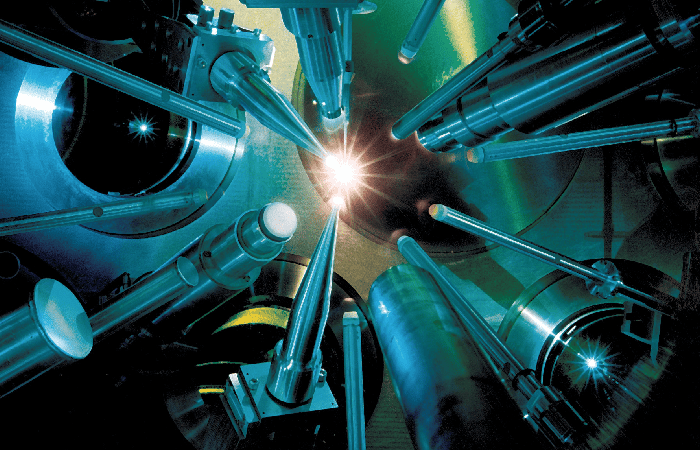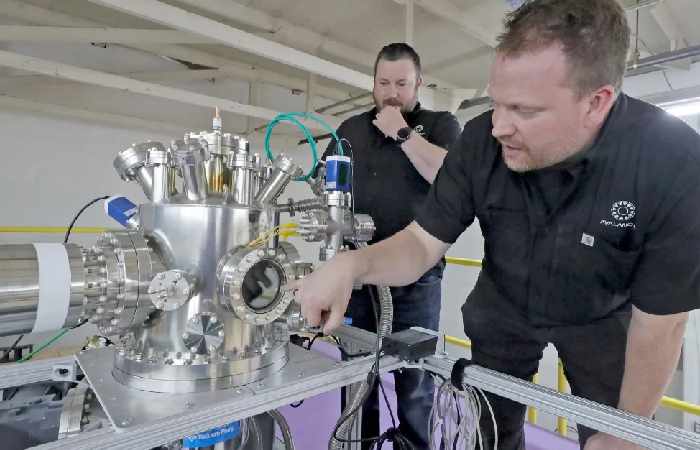Avalanch Energy – The Micro Fusion Startup Raised $40M In Series A Funding For Fusion Power, “Holy Grail”

The startup micro-fusion company Avalanche Energy revealed a $40 million funding round. Fusion power, known as clean energy's "Holy Grail" due to its potential to produce limitless amounts of power, is being tackled on a small scale by the Seattle-based company.
Fusion energy startup Avalanche is backed by venture capitalists. Micro-fusion reactors designed by the firm can be held in your hand. With an incredible energy density and infinite power applications, the modular reactor design can be stacked to supply clean energy and help the Earth become carbon-free.
Launch Of Avalanch Energy
Launched in 2018, Avalanche emerged from stealth in January 2022.
-
The same reaction that powers the Sun is used to generate fusion energy by slamming together atoms that fuse and release energy.
-
Fusion can be induced by engineers, but the trick is to extract more energy from the system than it takes to produce the conditions required for fusion to occur.
-
Increasing the voltage is similar to cranking up the heat on a cooker to boil water because it adds more energy to the system where the ions are fusing.
-
Over the following six to twelve months, Avalanche plans to use its Marty gadget to reach 300kV.
The Strategy Behind Avalanch Energy
Small-scale fusion devices, or systems the size of a big shoe box that could fit on a desktop, are being developed by Avalanche.

-
The micro-fusion reactors might compete with hydrogen fuel cells in sectors including long-distance transportation, maritime shipping, and aviation they could also be linked to smaller electrical grids, or they could be utilized in conjunction with renewable energy sources.
-
For instance, Toyota is considering employing fusion reactors to power hydrogen fuel-producing machinery.
-
Fusion companies and researchers have made the Pacific Northwest their home. In addition to Avalanche, the area is home to Helion Energy and Zap Energy in Everett, Washington, as well as General Fusion in British Columbia.
-
The Japanese company Kyoto Fusioneering, which supports the industry's commercialization, has established a presence in Seattle. Additionally offering fusion knowledge and research are the University of Washington and Pacific Northwest National Laboratory.

The Advantages Of Fusion Reactor
There are still fusion skeptics who are skeptical about the field's ability to technically realize its aim of accessible, commercial fusion despite the fact that it is decades old.
The U.S. Nuclear Regulatory Commission (NRC), the organization that regulates nuclear reactors fueled by fission, decided earlier this month to not apply the same licensing requirements to fusion as it does to fission, which gave the industry a boost.
Fusion reactors are far safer than fission reactors because they cannot melt down. The licenses are supposed to be issued by state departments of health.
Radioactive materials are already subject to regulation by the departments in hospitals and healthcare facilities. As opposed to employees at a distant federal agency, Langtry anticipates working with state officials to be simpler.
Future Of The Startup
From the quantity of work required to obtain a license to operate, Langtry said, "It's a huge win." "Since we won't have to wait three to five years to get a license, technology will advance significantly.
Avalanche received funding last year from the Defence Innovation Unit (DIU) of the Pentagon to create the Orbitron, a fusion device for power generation and space propulsion. By the end of 2027, DIU wants to employ Orbitron fusion technology in flight demonstrations.
After that, the business might take that technology and modify it for use in commercial applications back on Earth.

The Milestone Achieved By Avalanch Energy
The startup also declared that Marty, their second-generation fusion device, has achieved a technological milestone by running at 200 kV (kilovolt).
It could surpass the 190kV record set at the University of Wisconsin at Madison in 2006, according to CEO Robin Langtry, and represent the greatest operational voltage for any fusion device.
We're moving forward steadily, said Langtry. And the machines are scaling as we anticipate.
About Robin Langtry The CEO
Langtry and, co-founder and Chief Operations Officer Brian Riordan met while working on rocket propulsion systems at Jeff Bezos' space business Blue Origin in Kent, Washington.

The South Seattle-based firm increased the size of its testing facilities during the past year, and the team has expanded to 25 scientists and engineers.
About the Investors
Founders Fund and Toyota Ventures made significant contributions to the Series A investment, which was led by Chris Sacca's Lowercarbon Capital.
Azolla Ventures, Congruent Ventures, Grantham Foundation, and Clear Path are additional investors who contributed to the $5 million initial round for the business.
Autodesk, MCJ Collective, and the Climate Capital Syndicate, three new investors, also contributed.
About Chris Sacca’s Lowercarbon Capital
American investor, entrepreneur, and former lawyer Chris Sacca established the venture capital fund Lowercarbon Capital.
The fund focuses on funding businesses that are reducing carbon emissions and battling climate change. Lowercarbon Capital supports start-ups and emerging technologies that have the potential to have a beneficial environmental impact.
Companies that are tackling major sustainability issues, such as those related to renewable energy, transportation, agriculture, and other industries that produce carbon emissions, are specifically targeted by Lowercarbon Capital.
Lowercarbon Capital seeks to hasten the development and accomplishment of these businesses in their pursuit of a more sustainable future by offering financial support and strategic direction.
Conclusion
The company’s main objective is to provide game-changing fusion power packs.
The company is aware that merely building a functional fusion generator won't be enough to reverse global warming.
The only way they'll get there is by developing technology that is more efficient, less expensive, mobile, adaptable, energy-dense, and all-around superior to any power source that has ever been devised by humankind.




